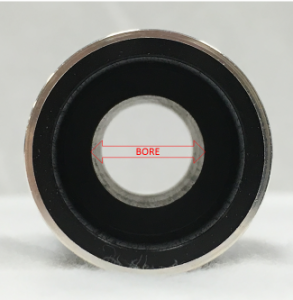Clarinet Replacement Barrels and Tuning
Don’t just grab any random barrel for your clarinet!
A barrel from one clarinet may fit onto another model or even brand of clarinet, but be aware that it may not give the best results. That’s because the barrel does a lot more than simply connect the mouthpiece to the top joint.
Clarinetists often describe barrels by their length, with 66 millimeters being the most typical length. In theory, a longer barrel should make the instrument flatter in pitch, much like pulling out a saxophone mouthpiece or a flute headjoint. While this is generally true, barrels of equal length can be quite different on the inside.

The bore (that is, the inside diameter) of the barrel is just as important to tuning as the length is. A larger diameter shortens the sound wave and sharpens the pitch. To further complicate things, most barrels are tapered, meaning that the bore at the top of the barrel is different than the bore at the bottom of the barrel. This taper can be unique to the clarinet model, and a barrel with a different taper will have different tuning tendencies. Most barrels are slightly larger at the top, but some are larger at the bottom, and others may have no taper at all.

The bottom line is this: Don’t just grab any random barrel for your clarinet! Be sure to get the one that was designed for it. If a change needs to be made for a specific purpose, get some expert help from a clarinet specialist to guide the process.
Click here for more information about Yamaha clarinets.














